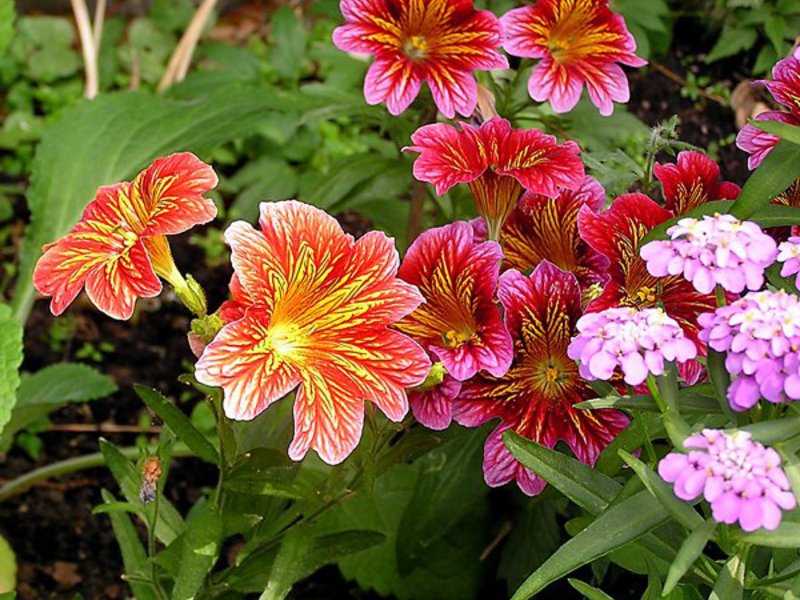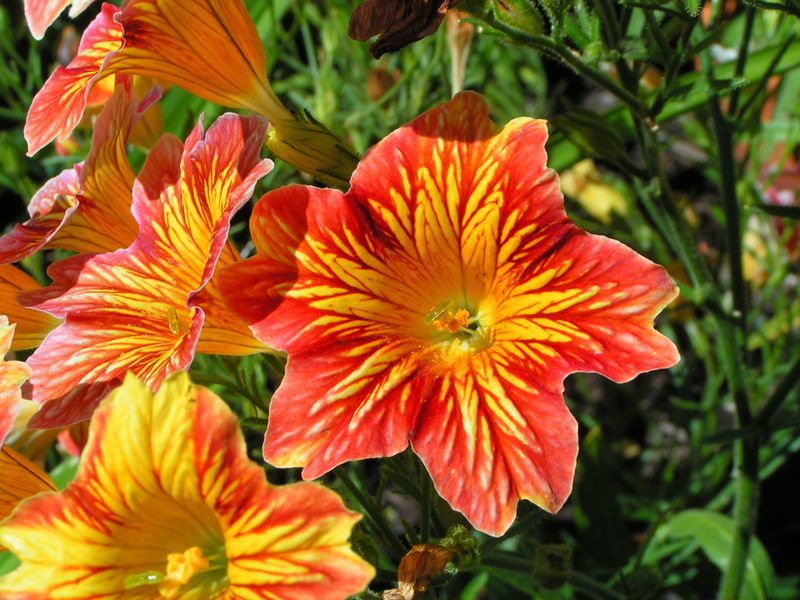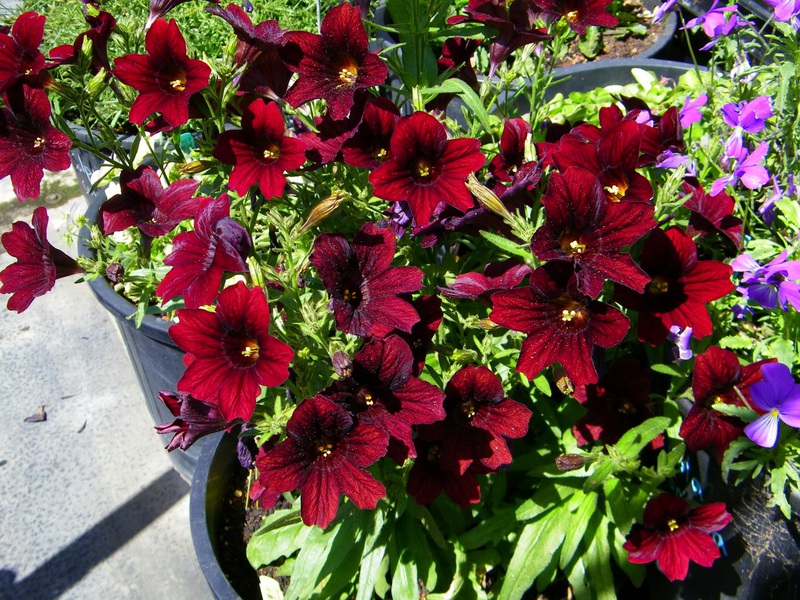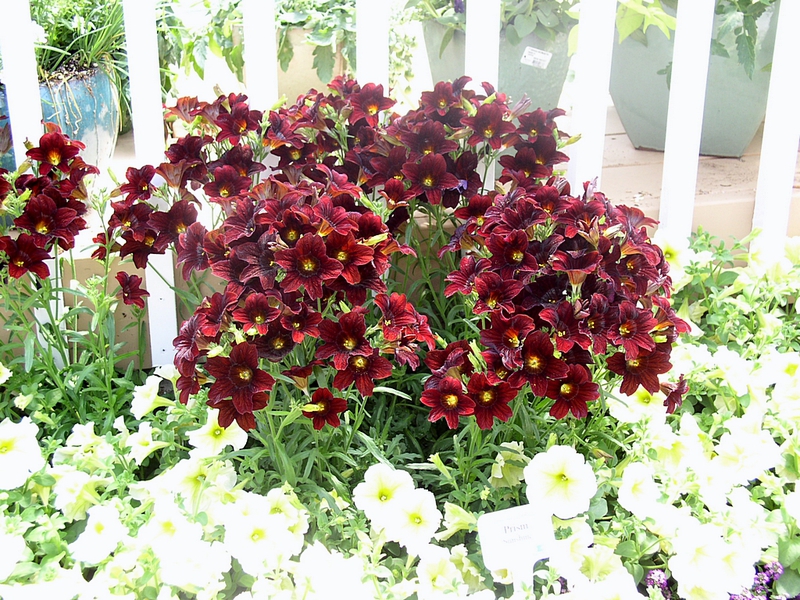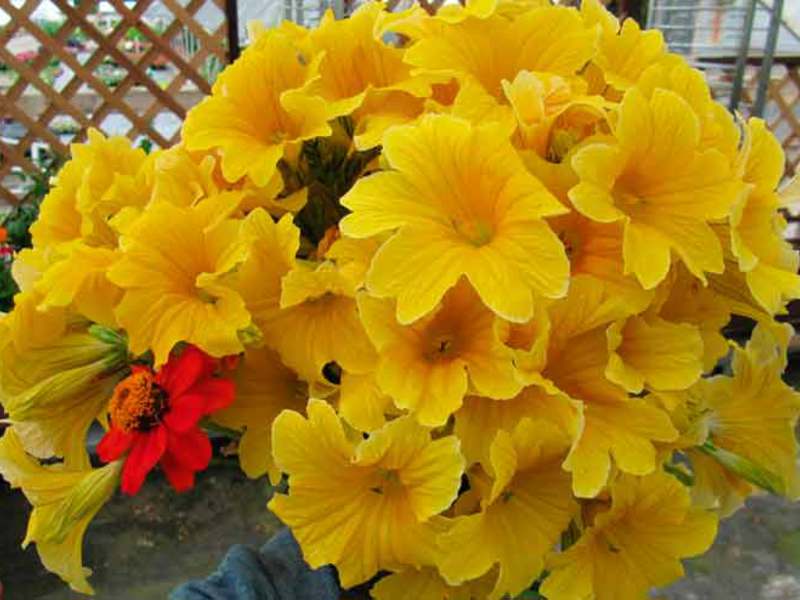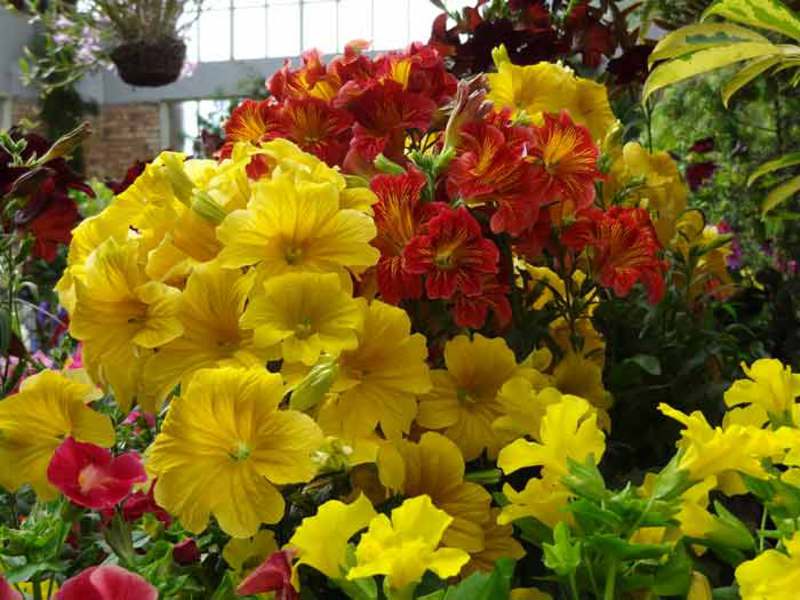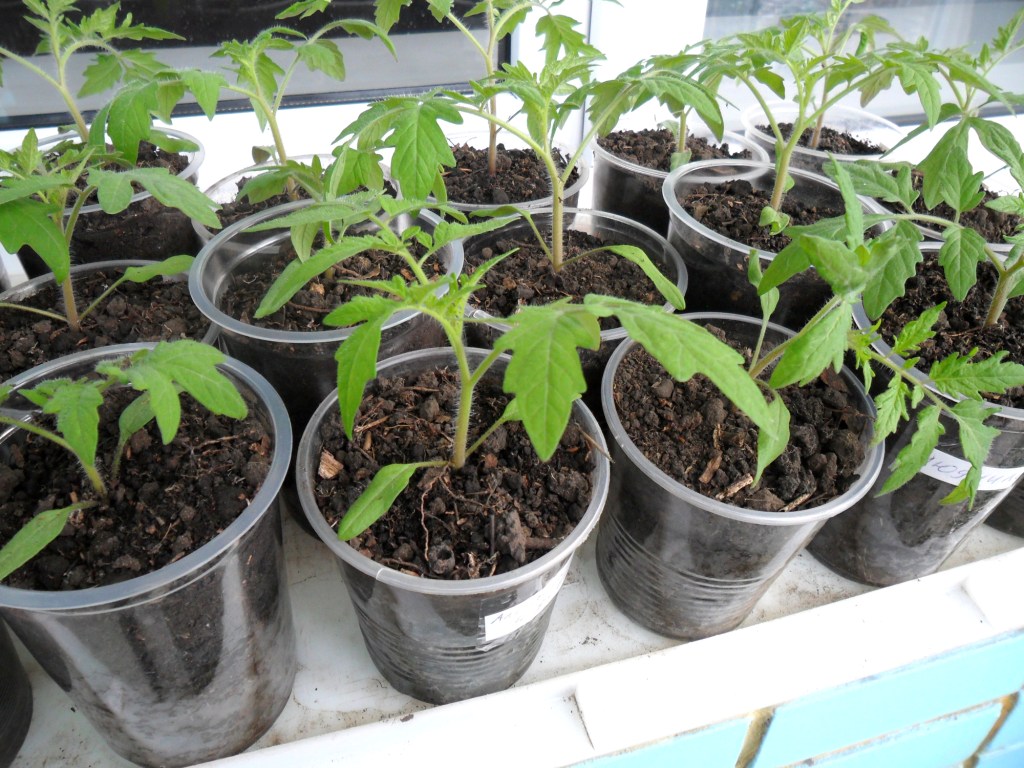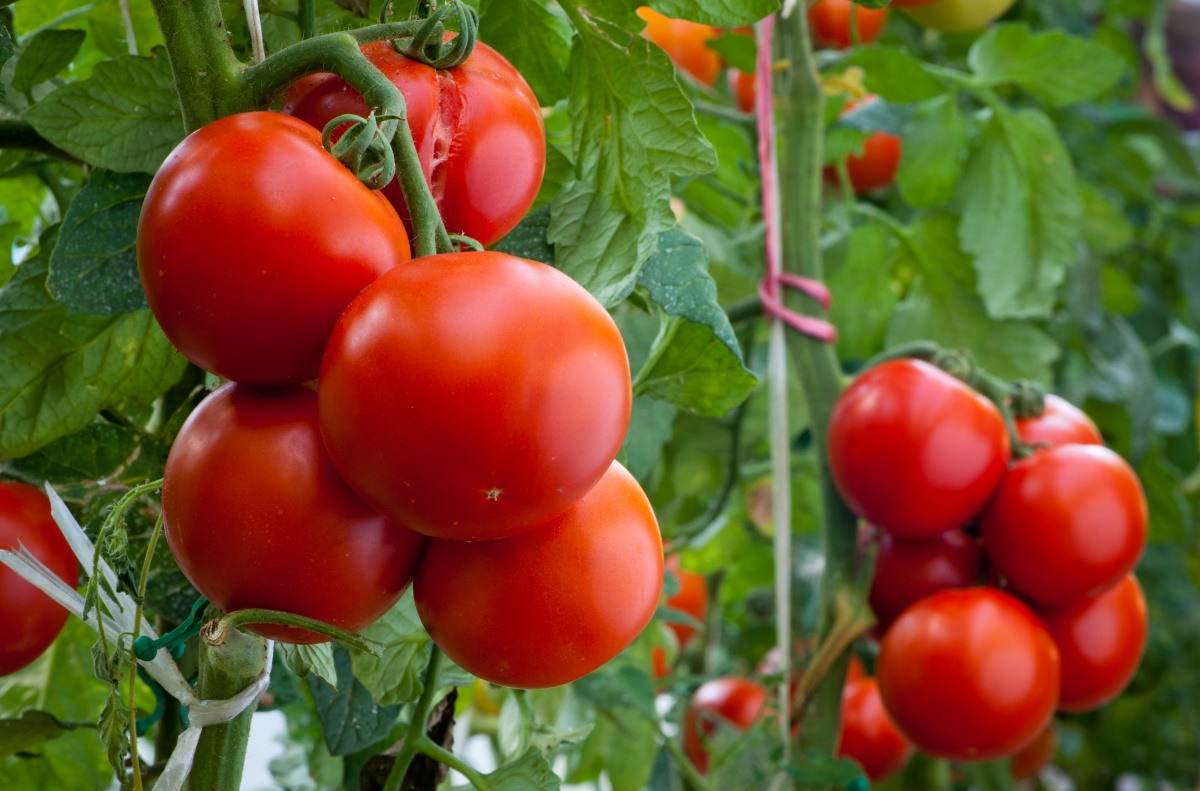To start acquaintance with salpiglossis follows from the fact that this plant is a member of the nightshade family, standing out for its bright flowering. He is also known as the pipe-tongue. The explanation for this is simple: if you pay attention to the shape of the corolla of the flowers, it may seem that it is a tongue rolled into a tube.
There are about 18 species in the genus of this plant. Salpiglossis can be grown from seed as an annual, biennial and perennial. The native habitats of this plant are mountainous regions of South America.
Content
Description of salpiglossis
A photo of a plant gives an incomplete picture of its features, and the care of a flower depends on them. In its family, salpiglossis is a stunted plant, reaching a height of about 40 cm. Although there are more impressive specimens in size, this depends on the variety. The root system is indistinctly expressed, there is a main root and well-developed lateral and adventitious roots. During the growing season, forms a thin, erect stem, which can form several branches.
Pubescence evenly covers the entire surface of the stem, formed from glandular simple hairs... Therefore, when you touch the stem, it seems sticky. The leaves are arranged on the stem in the next order, they can be petiolate (basal), short-petiolate (in the middle part of the stem) or sessile (upper). The leaf blade usually has an oblong-elongated shape. It can be modified from solid to notched-lobed, whole-edged and shaped with a serrated edge.
During growth, flowers are formed of large sizes of regular shape, with five lobes, which are decorated with a funnel-shaped corolla, differing in bright color and velvety surface. They can have a wide variety of colors, from white and yellow to most shades of red, as well as purple and blue. If you pay attention to the pharynx of the corolla, then you can find a reticular pattern formed by golden or dark veins. Because of this feature, salpiglossis looks even more attractive.
In plants grown from seeds, flowers are small in size and reach a diameter of 4-6 cm... Salpiglossis blooms for a long time, from July until the first frost, which begins in October. At the end of the growing season, a fruit is formed that looks like a two-nested oval box. It contains many seeds, which are usually small. They retain high germination capacity for 4-5 years.
Decorative view and its varieties
Salpiglossis notched (Latin S. sinuata). This representative of the group of annuals can grow up to 100 cm in height. The morphological features of the plant exactly repeat the characteristics characteristic of the genus salpiglossis. It has been cultivated as a cultivated since 1820.
Of everything exists three types of Salpiglossis sinuata:
 large-flowered (var. grandiflora). Tall specimens, in which branched peduncles and many large flowers are formed;
large-flowered (var. grandiflora). Tall specimens, in which branched peduncles and many large flowers are formed;- superbissima (var. superbissima). Usually it grows no higher than 60 cm, peduncles are unbranched, flowers look impressive due to their large size, corrugated edges are additional decoration of the corolla petals;
- low (var. nanum). They can grow no higher than 40 cm, have densely branching stems, and form many flowers during the growth period.
A feature of hybrid varieties and mixtures of salpiglossis is a pronounced tallness, branching of the stemas well as the ability to adapt to growing conditions. The main shades are bright yellow, burgundy and delicate lilac. As part of any hybrid mixture, a deep red hue is necessarily present.
Kew Blue variety. They have a small height, maximum 30 cm, and are decorated with purple flowers. Additional originality is given to the inflorescences by a dark pharynx and a rare net of yellow veins. These plants are most common in greenhouses and winter gardens. They can be used for decorative purposes if planted in spring, as well as in the first third of summer.
Casino Mixed variety. Instances belonging to this class grow up to 45-50 cm in height, differ in their small size and the presence of a branching stem. The color palette includes all common corolla shades. However, in addition to them, red flowers with a yellow throat are provided. Cultivation is only possible with support.
Bolero variety (Bolero). The specimens belonging to this variety grow no higher than 60 cm, have abundant flowering and a stable stem. They became widespread for decorating greenhouses and summer gardens. Can grow well in bright sunlight and light partial shade.
Variety Festival. Rather undersized plants, which can grow up to 30 cm, are decorated with flowers of various colors.
Often in stores you can find special mixtures in which the color of the corolla and the height of the stems can vary greatly.
Growing and care
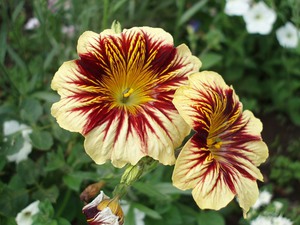 Mandatory conditions, the implementation of which ensures the normal development of salpiglossis, is the presence of good drained soil and moderate watering. Plants react positively to heat and light, and begin to weaken in strong winds and a lack of moisture. Subsequently, this can lead to wilting, and after removing the interference, it takes a long time for them to return to their former decorativeness.
Mandatory conditions, the implementation of which ensures the normal development of salpiglossis, is the presence of good drained soil and moderate watering. Plants react positively to heat and light, and begin to weaken in strong winds and a lack of moisture. Subsequently, this can lead to wilting, and after removing the interference, it takes a long time for them to return to their former decorativeness.
It is recommended to plant salpiglossis in places where neutral or slightly acidic soils prevail. When preparing the site, it is necessary to add to the soil ash or dolomite flour... If there is clay soil in the selected place, then fertilizers such as:
- sand;
- humus;
- peat.
Top dressing
During the summer season, it is necessary to apply to the soil several times organic and mineral fertilizers... The normal development of tall varieties grown from seeds is impossible without support. When flowering comes to an end, the flowers should be removed. This will help the plant to redirect all its forces to form new buds. It is also necessary to constantly deal with weeds, so that the flower can remain attractive for a very long time.
Reproduction
Since salpiglossis is a classic annual, it is mainly bred by sowing seeds. Residents of the southern regions can sow seeds directly on the prepared bed in spring or autumn. In places with different conditions from the south of the country, it is recommended to use the seedling method of growing salpiglossis.
Growing from seeds
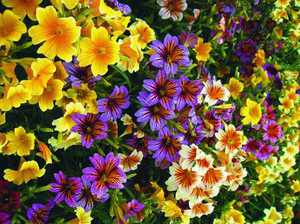 Photos of salpiglossis are so impressive that gardeners do not stop at the difficulties of growing these flowers.
Photos of salpiglossis are so impressive that gardeners do not stop at the difficulties of growing these flowers.
Seeds need to be prepared for sowing between late March and mid-April. Sowing is carried out in individual cups, placing the seeds on the soil surface. You need to slightly moisten them with water, cover with glass and leave for germination for 14-21 days.It is impossible to get strong seedlings without proper lighting. Here, not only a deficit of light is unacceptable, but also its excess, since this can provoke burns.
As a result of transplantation, young seedlings are severely injured, therefore it is recommended restrict itself to ordinary thinning... It is possible to carry out a pick only at the stage when the first true leaves will form in the seedlings. Transplanting seedlings to a permanent place should be done only when the last wave of frost has passed. Plants should be placed at least 20-25 cm from each other. It is useful to carry out mulching with compost in early spring to reduce evaporation of moisture from the soil.
Diseases and pests
Particular attention must be paid to proper watering and protection from adverse weather conditions. Otherwise, the likelihood of root and stem rot development increases. The consequence of this is the death of plants and massive soil contamination.
- if it is clear that the disease begins to infect the plants, and nothing can be done about this, then you need to dig out the diseased bushes together with an earthen clod, and then burn them;
- in a special way you need to prepare the soil, which should be treated with fungicides;
- it is necessary to be more careful with the choice of the optimal irrigation regime, before planting, you need to add sand to the pit, and also choose the correct plant placement scheme, avoiding thickening of the plantings.
Salpiglossis is particularly affected by aphids. The most effective way to deal with it is using insecticides. If the scale of damage to plants is very large, then it makes sense to burn them.
Use in landscape design
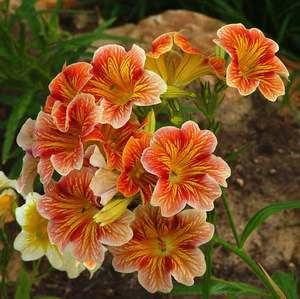 Salpiglossis most clearly demonstrates its decorative properties when using as part of group landings... This plant looks especially impressive on voids among perennials. Experts do not recommend sparse planting of the pipe-tongue, since with such a growing scheme its bright colors become a single spot, so the flowers no longer look so attractive.
Salpiglossis most clearly demonstrates its decorative properties when using as part of group landings... This plant looks especially impressive on voids among perennials. Experts do not recommend sparse planting of the pipe-tongue, since with such a growing scheme its bright colors become a single spot, so the flowers no longer look so attractive.
Salpiglossis has become widespread as part of group plantings, where it allows you to focus on decorative deciduous plants decorated with silvery leaves. Perennials such as purple lobularia and blue lobelia can emphasize the decorativeness of salpiglossis.
Conclusion
Ordinary crops are not always sufficient to emphasize the decorative properties of a garden plot. It is often necessary to use special plants that can create the necessary contrast or be used as part of complex flower arrangements... Just such a plant is salpiglossis, which can be easily grown on the site. Although it is quite unpretentious to care for, however, when growing it, you must follow certain rules, without which it is impossible to let them show all their beauty.
